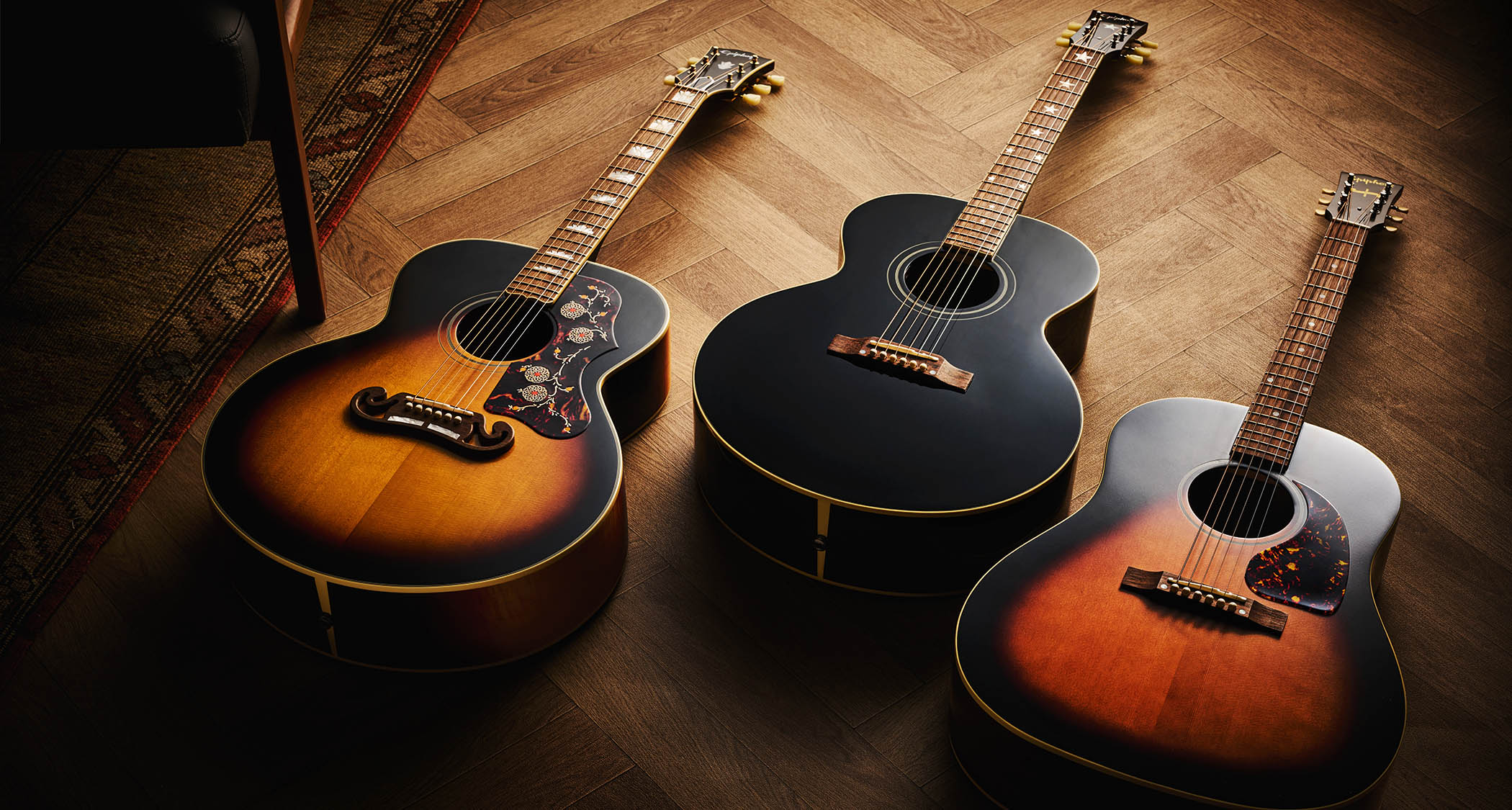
Everything from Epiphone’s ‘Inspired By Gibson Custom’ range that has come our way in recent months has raised eyebrows hereabouts and we’ve been left wondering if Gibson’s sibling marque’s output is a bit of an own goal for the mighty guitar company.
After all, with the type of quality we’ve seen, we have been left wondering why – with this sort of quality readily on hand at around a quarter of the price of the ‘real thing’ – anyone would even take a second look at the Gibson equivalents. But that was the impression left by the electric instruments.
Many would argue that to pull off the same trick with acoustic guitars, which are traditionally harder to manufacture and require far more hands-on work than an electric, is a whole other ballgame.
Casting an eye down the spec sheets on this trio only served to deepen the mystery further. All solid woods, mother-of-pearl inlays, bone nuts and saddles, one-piece mahogany necks and an LR Baggs acoustic guitar pickup thrown in for good measure – what’s going on here, exactly?
The only things that really differentiate these guitars from their made-in-USA counterparts are the poly finishes, instead of nitrocellulose, and laurel fretboards and bridges, instead of rosewood. And the price here includes a posh hard case, too. Surely these can’t stand up to the originals, can they? There’s only one way to find out: let’s start opening cases…
1942 Banner J-45
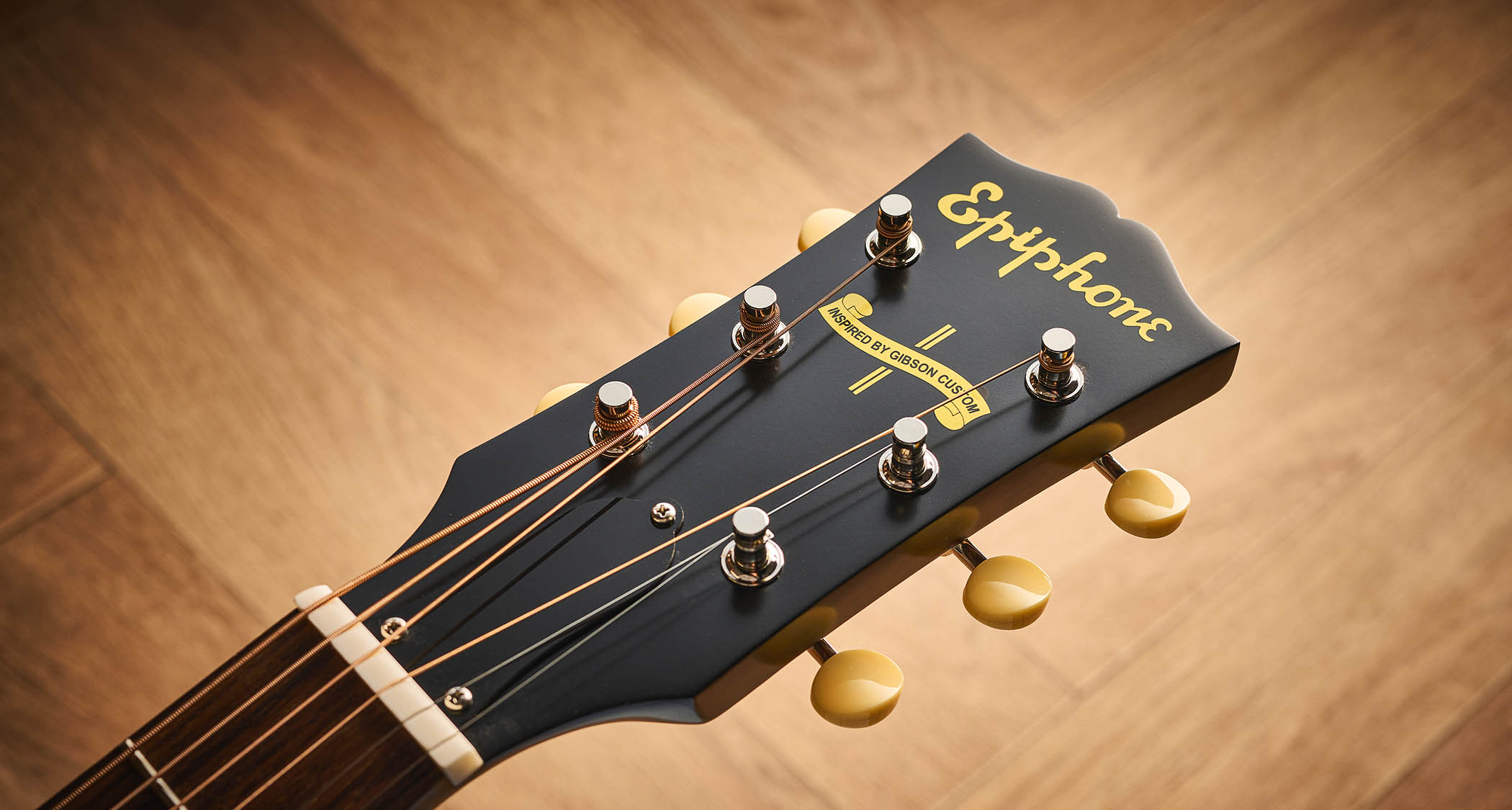
The ‘banner’ in the J-45’s title refers to the motif on the guitar’s headstock, which, on a vintage Gibson, would have read, “Only A Gibson Is Good Enough”, but here it reads “Inspired By Gibson Custom”.
The 1942 part really needs no explanation as it refers to the first year of the guitar’s production and thus is said by many to be the Holy Grail year of J-45s. As far as this particular dreadnought is concerned, it is known as Gibson’s ‘workhorse’ and has been found in the hands of a whole roster of top-name artists, historically speaking.
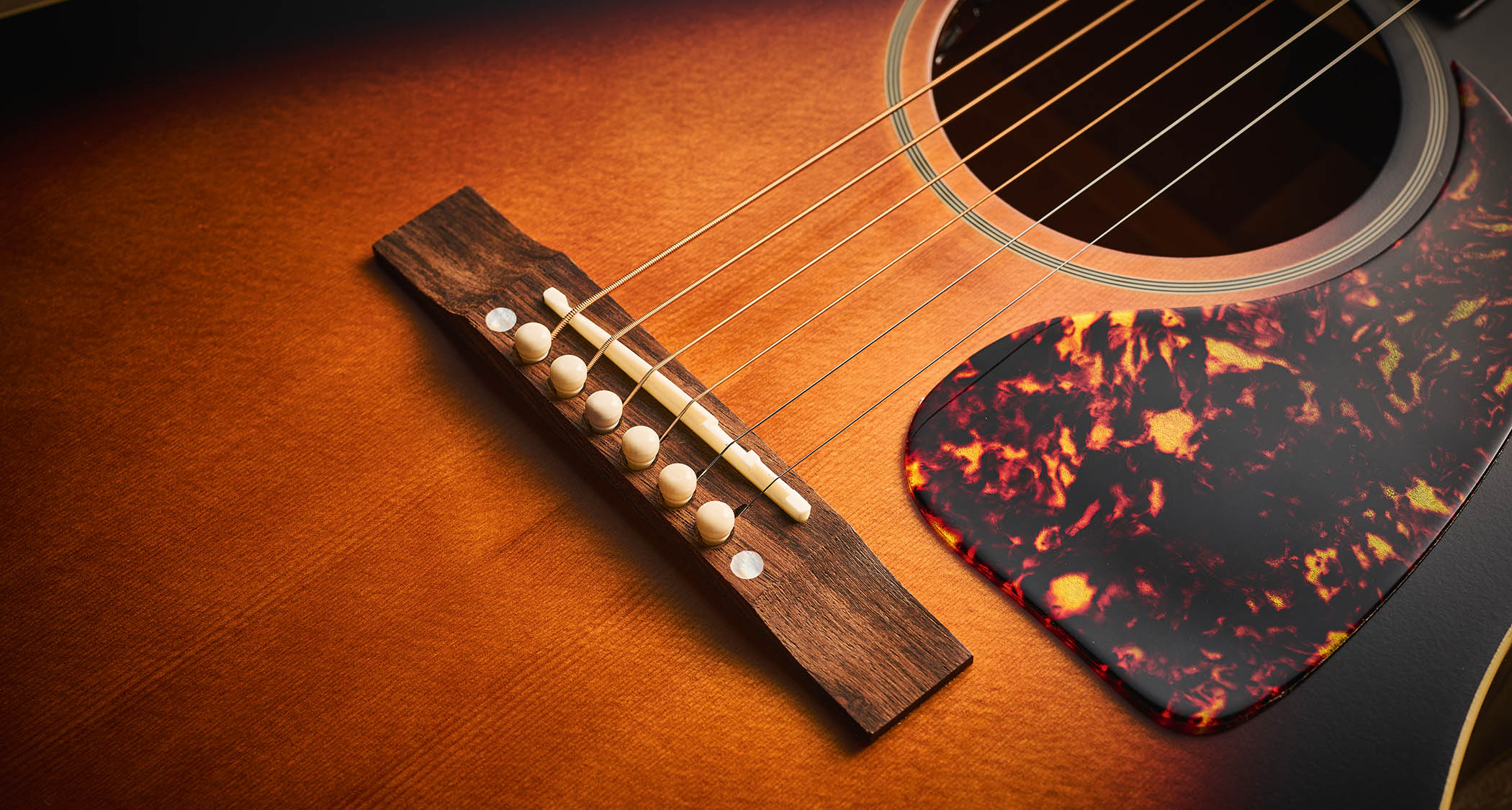
Opening the sumptuous hard case with its blue interior lining we could have easily been looking at a case queen from yesteryear. The VOS finish (standing for ‘Vintage Original Sheen’) is very effective in summoning up that dulled-down patina of older instruments, but the lack of any finish checking gives the game away.
The old-style headstock shape with ‘Epiphone’ in the same font that was used for Gibson back in the day is another nice touch, and the presence of that banner mentioned earlier completes the look. Before we even pick up the guitar we can tell we’re dealing with a class act.
If you’ve seen laurel fingerboards elsewhere you may have determined that it can look a little anaemic when compared with rosewood, but that’s simply not the case here
The construction features of the J-45 follow the traditional path in most respects. According to Epiphone’s spec the top is red spruce (usually a nickname for Adirondack), but here we’re pretty sure that the grain pattern indicates that the top is Sitka. Nothing wrong with that, of course. It’s been thermally aged, too, which is another thing you wouldn’t necessarily expect to find at this price point.
Back and sides are mahogany and, whereas you might think there could be some cost-cutting in the grade of timber that has been used here, what we see looks more than serviceable and quite in keeping with the overall vintage vibe of the instrument.
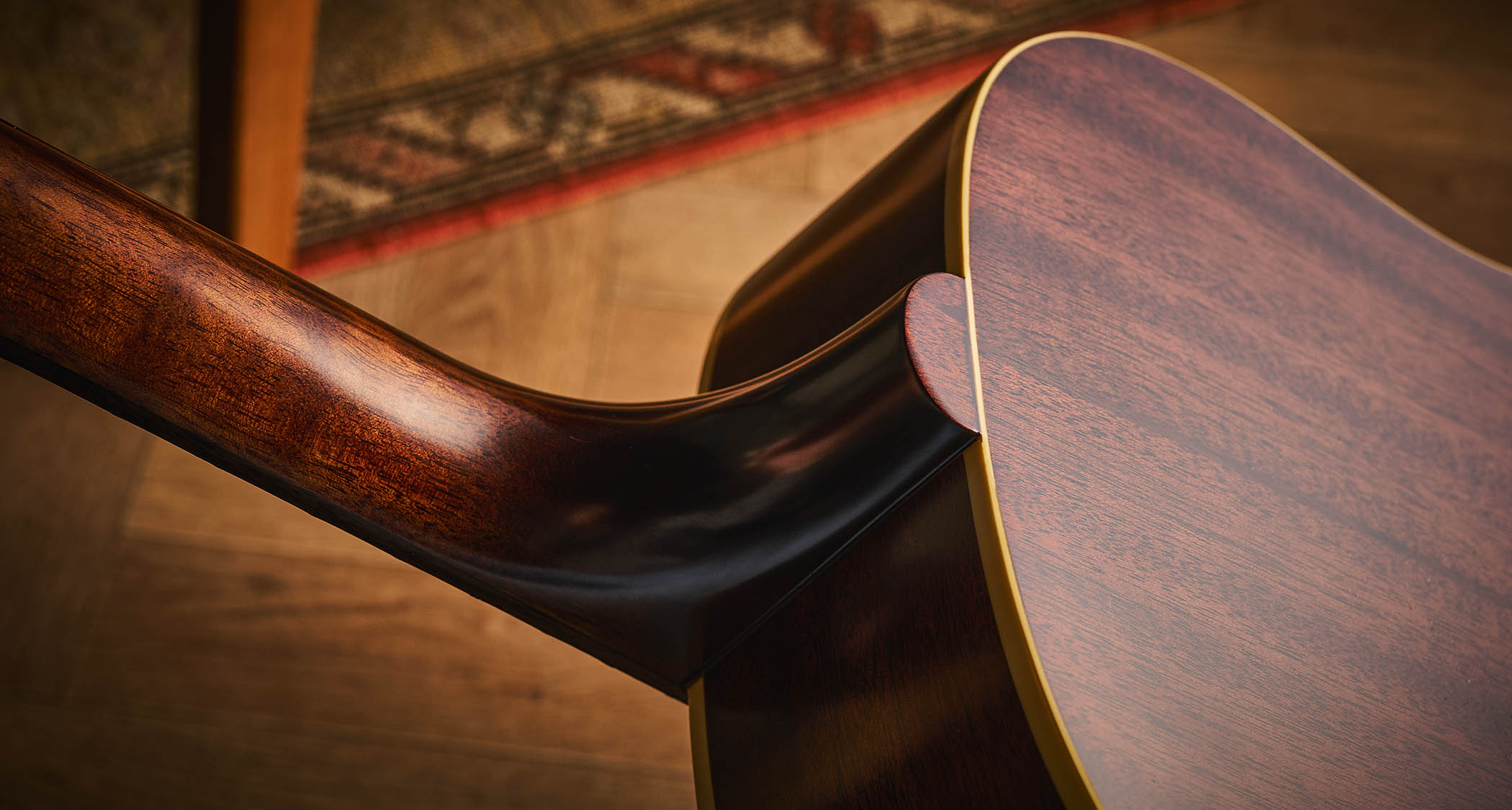
The neck is one-piece mahogany, too, instead of Epiphone’s – and many other companies like it – use of scarf joints and separate heels. It’s just the fingerboard that contradicts the accepted J-45 recipe in that, here, and indeed on all three of these acoustics, we find laurel instead of rosewood.
If you’ve seen laurel fingerboards elsewhere you may have determined that it can look a little anaemic when compared with rosewood, but that’s simply not the case here. The fingerboard is not as dark as some aged instruments we’ve laid eyes on, but we’ve definitely seen paler looking rosewood on guitars before now.
The other body furniture here is a laurel bridge (the nut, saddle and string pins are bone) and open-back tuners with period-correct white buttons. The cherry on top comes in the form of an LR Baggs VTC pickup and preamp combo, with the controls tucked away out of sight in the guitar’s soundhole – something the Gibson equivalent currently doesn’t include.
1957 SJ-200
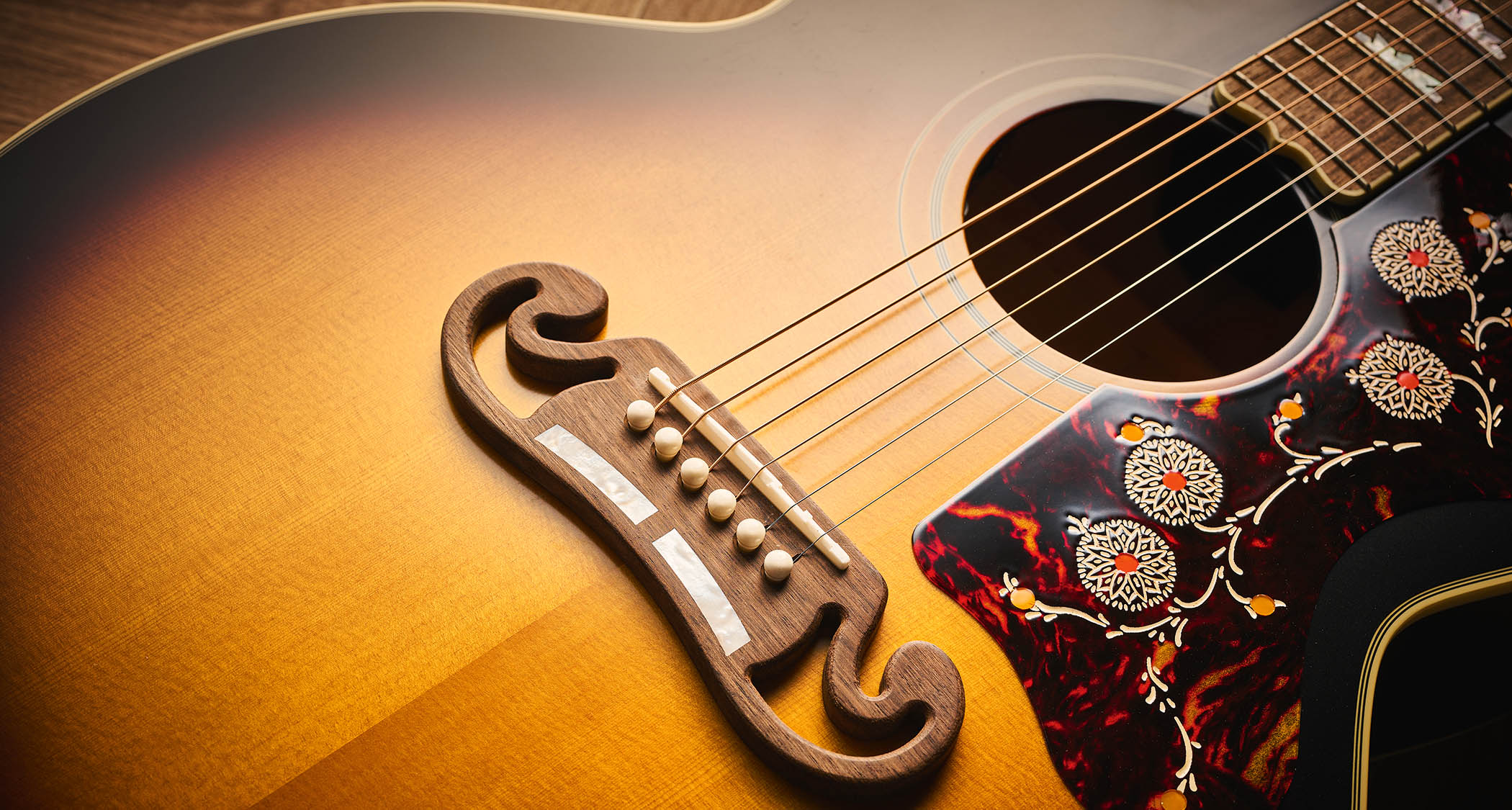
Gibson’s ‘Super Jumbo’ is probably better known as simply the J-200 and more colloquially as the ‘whispering giant’. Here, it’s received the Epiphone treatment with all the hallmarks of an original from the late 1950s: the famous moustache bridge, large open-book headstock and lavishly decorated pickguard. A giant it most certainly is, but whether it whispers or roars remains to be seen.
Epiphone’s SJ-200 follows a similar pattern to that of the J-45. A thermally aged Sitka spruce top with the very suave-looking VOS poly finish that convinces the eye that this instrument already has some miles on the clock.
The back and sides are maple, and Epiphone hasn’t held back on quality here, either, as the figuring in the timber is very nicely flamed, particularly on the back. The sunburst has been applied well, visibly tipping its hat toward the late-50s vintage era at the same time.
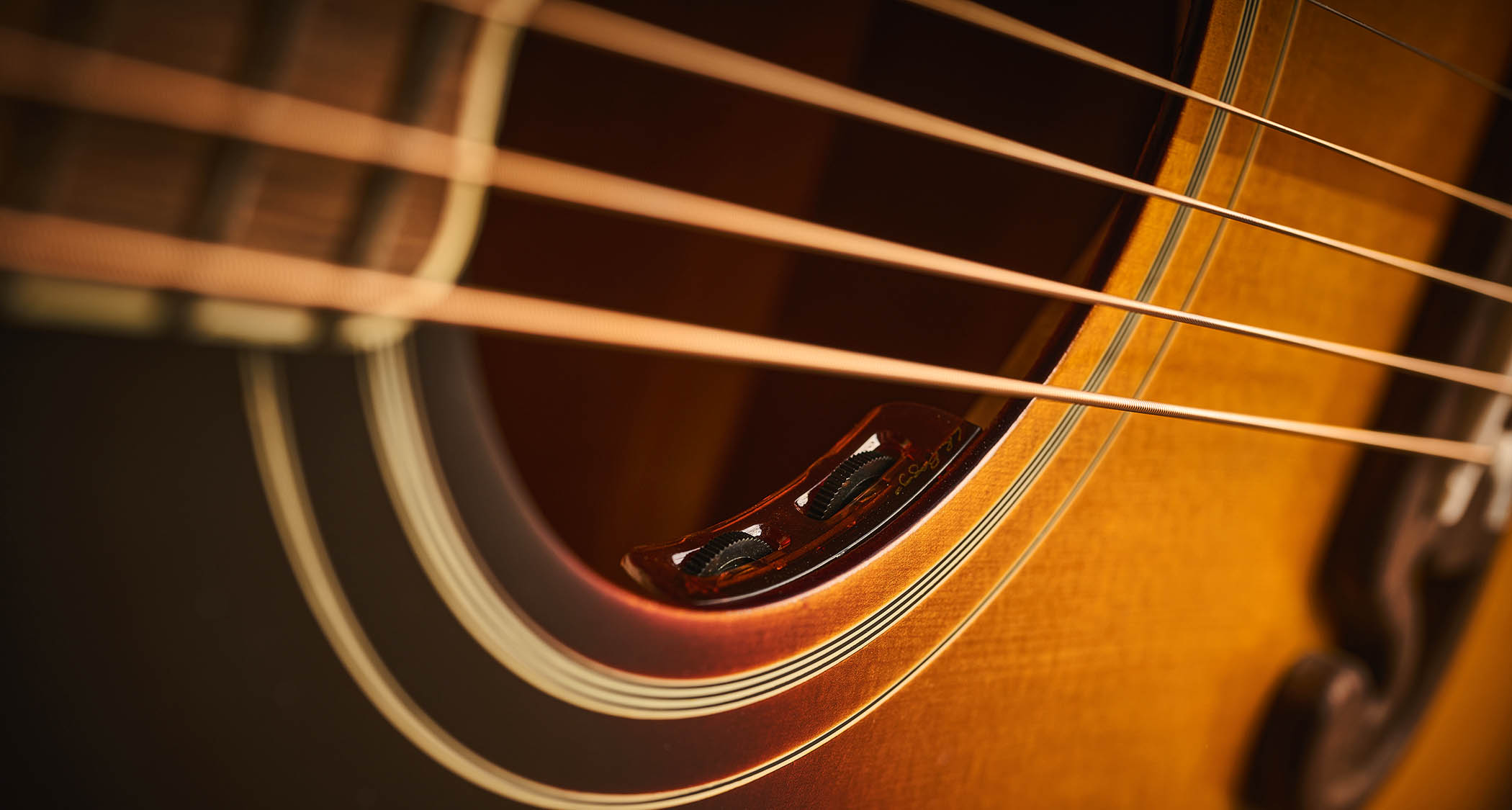
As before, the fingerboard and bridge are both laurel – perhaps a little paler than on the J-45 but still a viable stand-in for rosewood. The bridge, in particular, is very grand, with two strips of mother-of-pearl and bone bridge pins completing the picture. Real m-o-p is also used for the crown inlays, which is another unexpected touch of class on an instrument in this price range.
The neck carries on with the maple theme, with a walnut centre-strip similar to that which you’d find on a Strat or Tele. And, once again, there’s an eye-catching flame to the maple here, too.
The wide open-book headstock carries the m-o-p Epiphone logo, and the six Kluson-style Epiphone Deluxe tuners, bone nut and compensated saddle round off the accessories. Like the J-45, the SJ-200 comes with an LR Baggs VTC, ready to take to the stage.
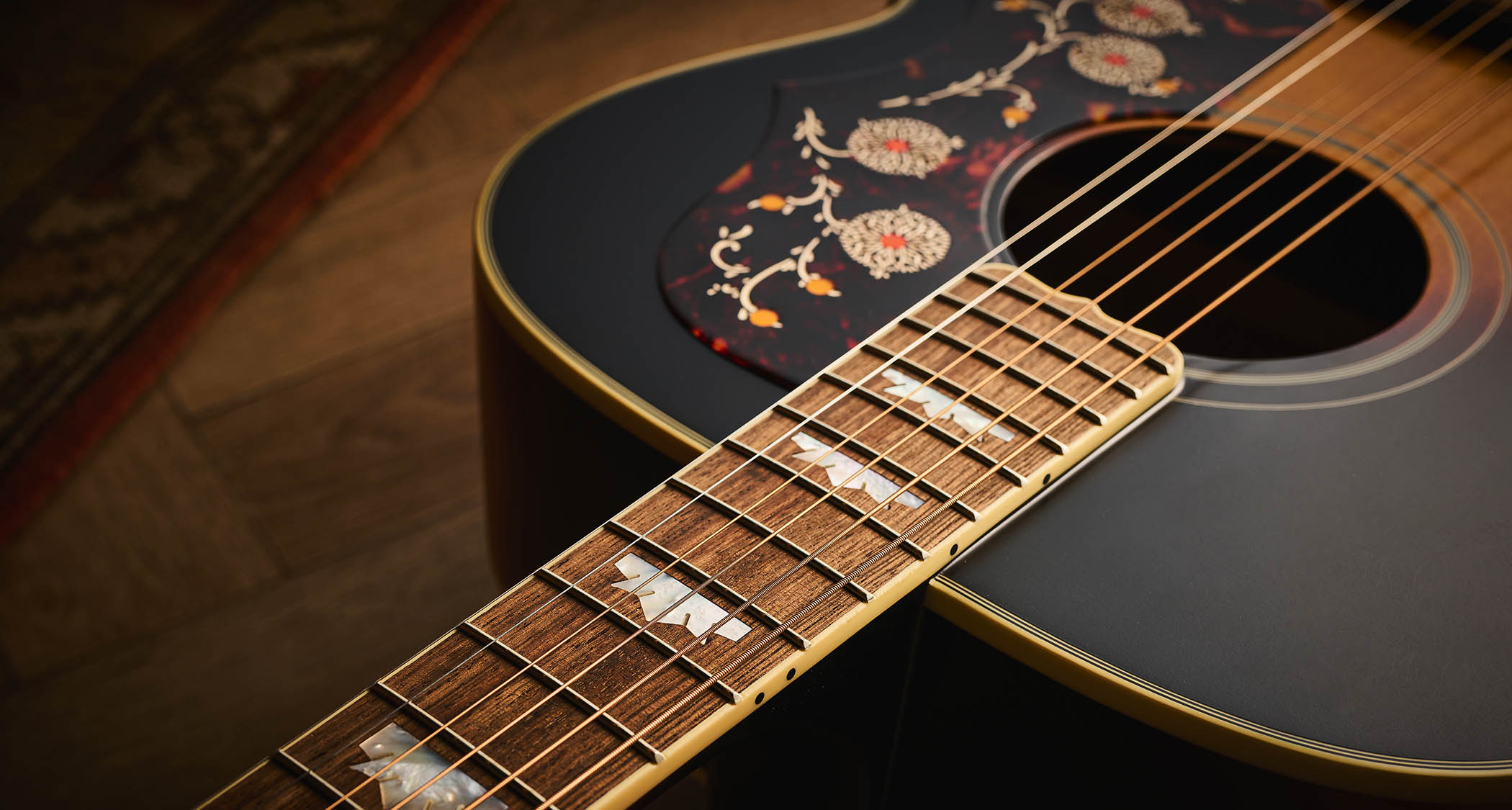
J-180 LS
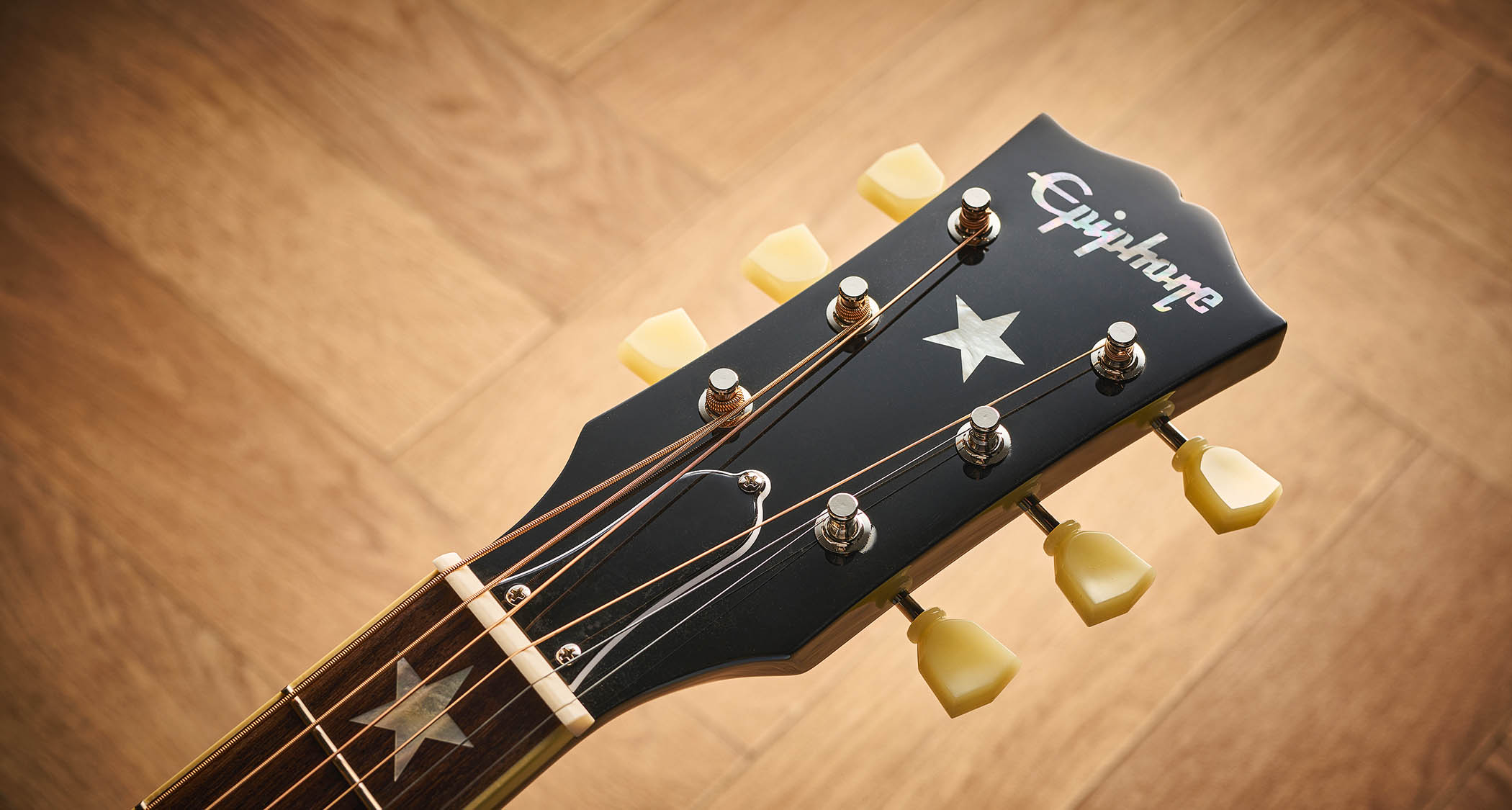
Unlike the other two Epiphones we have here, the J-180 doesn’t carry a specific date to fix it at a particular point in time. But Gibson lore tells us that the guitar was first introduced in 1962 as a signature model for The Everly Brothers, who had previously shown a fondness for the J-200.
When Gibson offered the brothers their own model they said they wanted something that was fundamentally in the same sonic ballpark but with a slightly smaller body – and in a black finish with star inlays. And that’s precisely what we have here, although other, quite surprisingly colourful, finishes are available (see spec list).
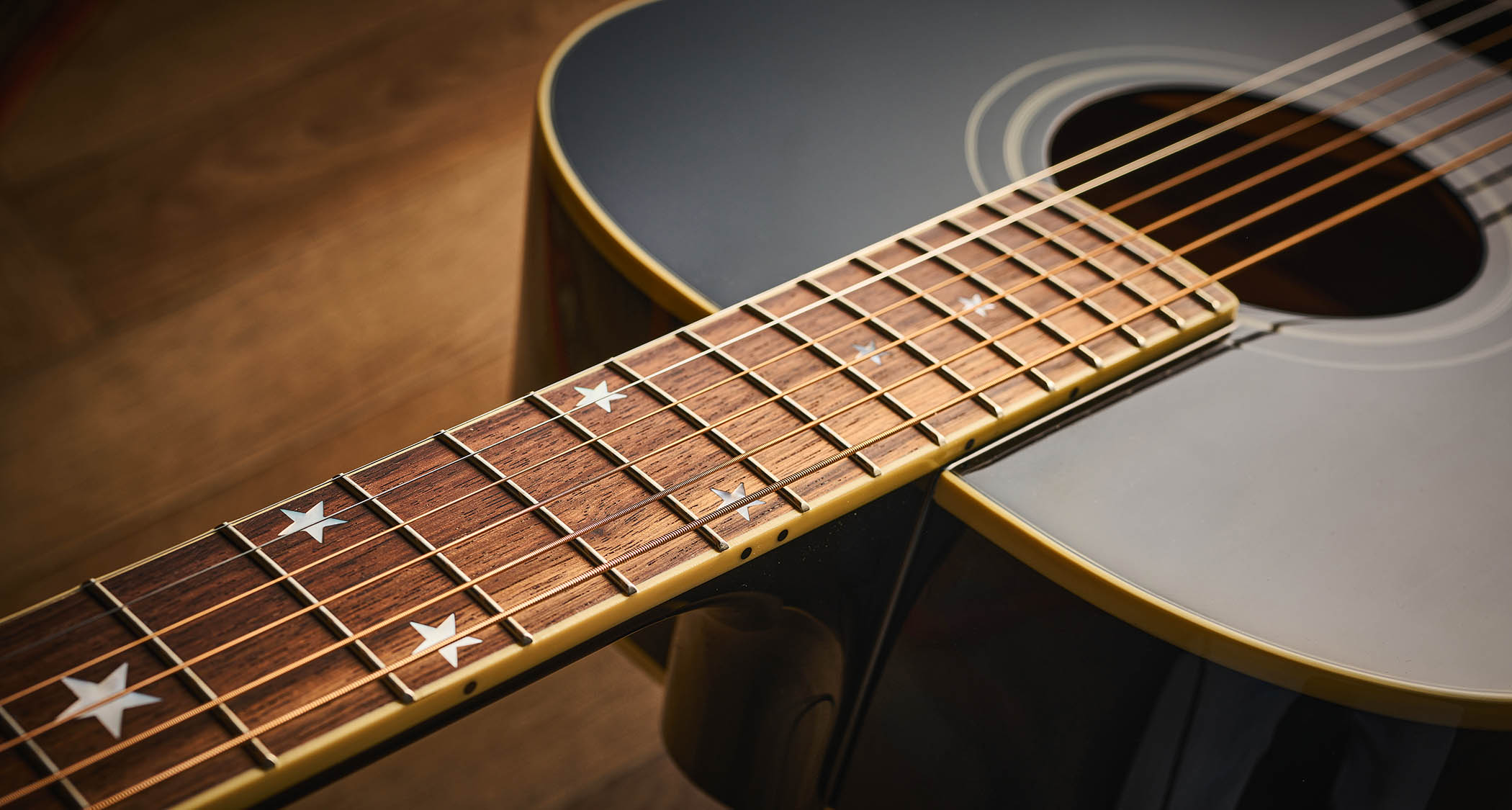
Underneath the finish we find the same thermally treated Sitka top that’s present on the other two guitars, with mahogany back and sides. Apart from that, construction details tell the same story as before: a one-piece mahogany neck with a dark-ish laurel fingerboard and bridge, Epiphone Deluxe tuners with keystone buttons, and bone for the bridge pins, saddle and nut.
The white binding plays the perfect foil to the none-more-black body, the mother-of-pearl star inlays along the fretboard being the only real sign of any serious bling. Everything else here is very gallant and understated. It’s a looker, for sure.
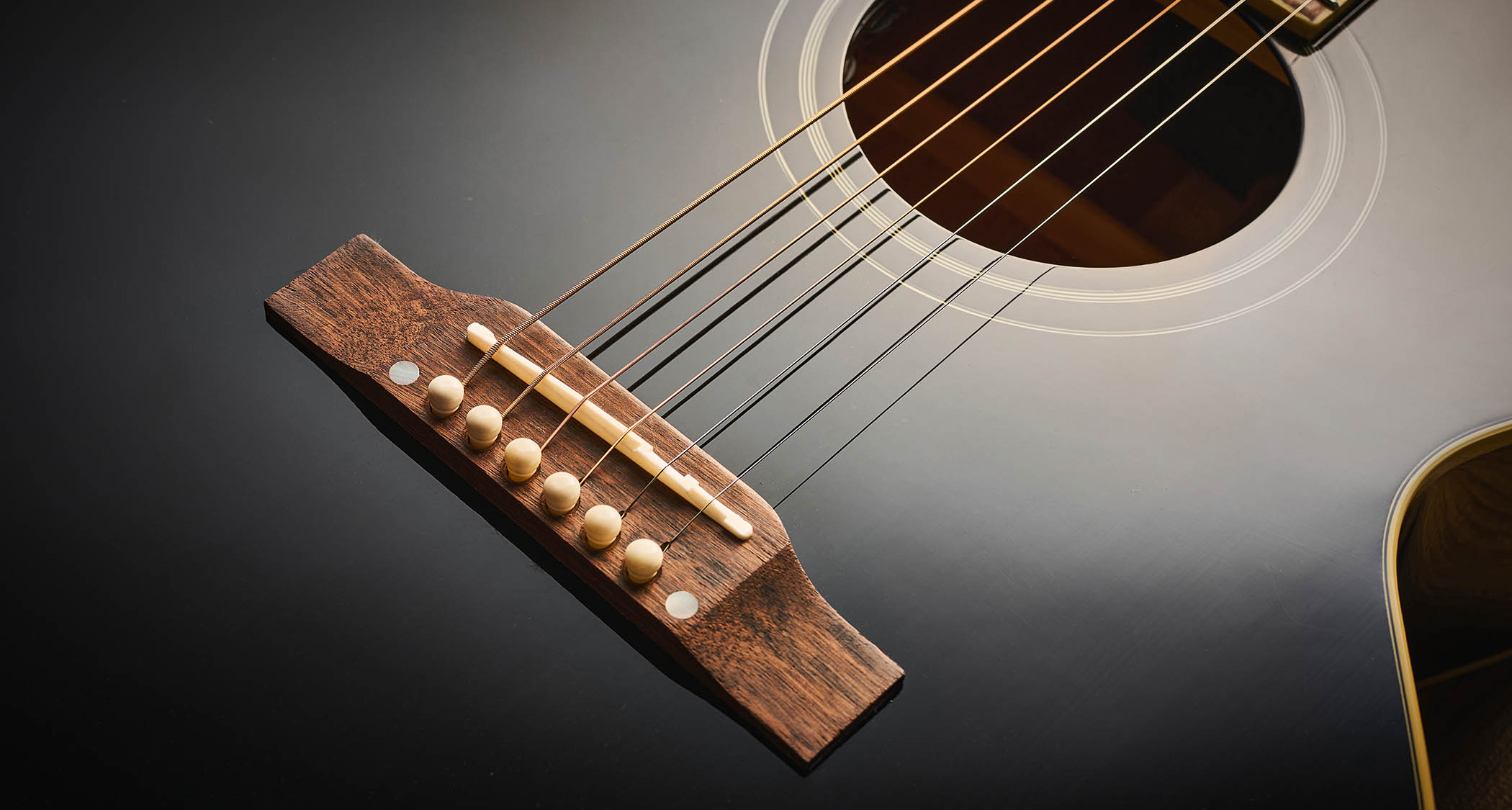
Feel & Sounds
Starting with the 1942 Banner J-45, Epiphone describes the neck profile here as simply ‘V’, but it’s a very soft V. It’s quite satisfyingly chunky, too. It’s not been overdone; it just feels like you have a very workmanlike handful.
The low-ish action makes playing chords a breeze, but, wait a minute… the tone! It’s full and earthy with that characteristic grunty bass end that you associate with a good J-45. The trebles are nice and sweetly rounded, too.
There’s plenty of punchy dynamics that allow anything from gentle strumming to letting yourself go a bit with some wilder fare, and the Epiphone just quietly caters for it with no fuss at all. And all this for around $/£1.1k? Astounding.
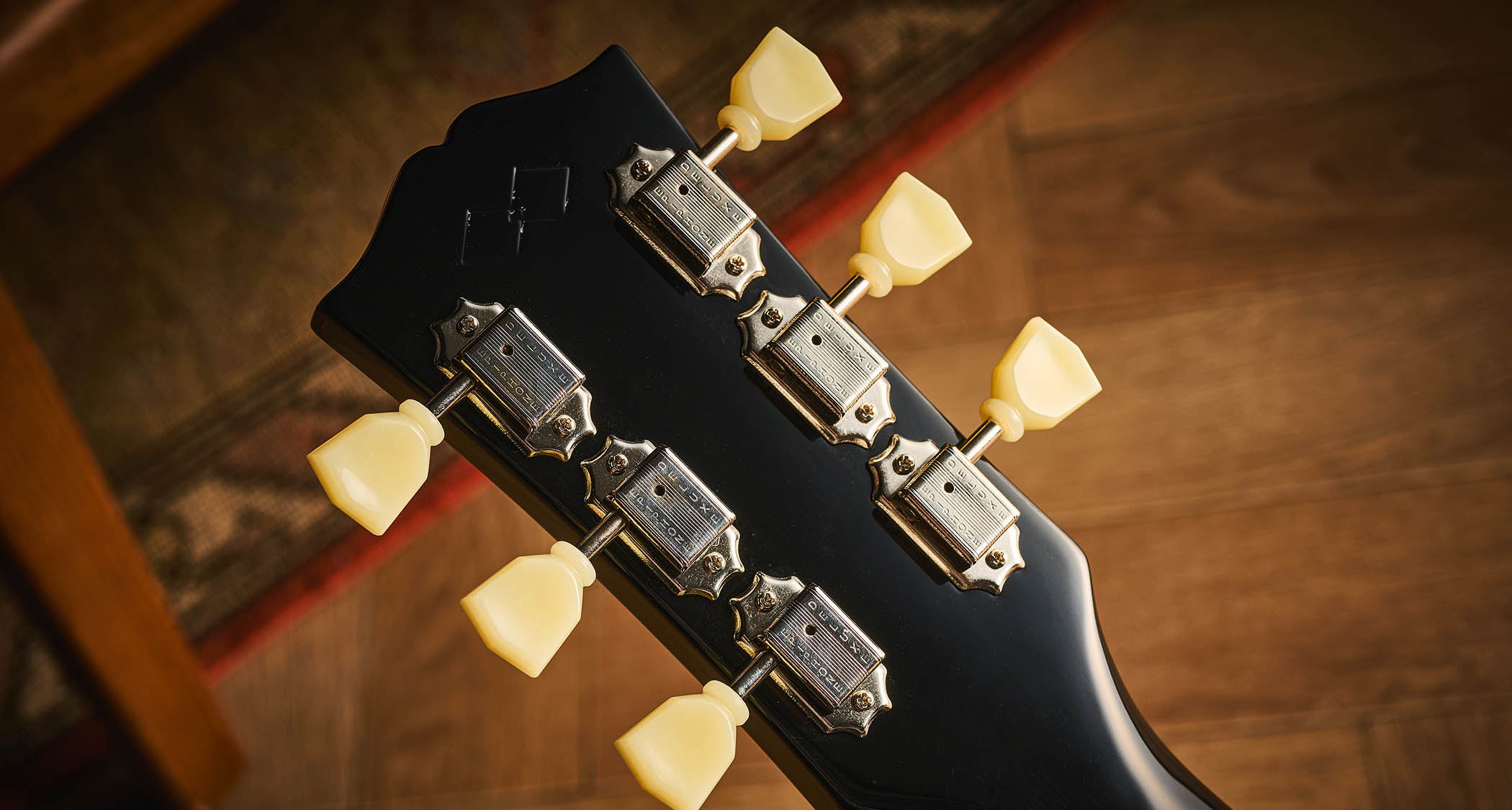
The LR Baggs VTC brings another dimension to the J-45’s performance in that it enhances everything we’ve already heard acoustically, adding a little more flexibility to the Epiphone’s already impressive performance. It’s a stage-ready acoustic brimming with vintage chic that’s good for a whole umbrella of styles – we couldn’t really ask for much more.
The 1957 SJ-200 is another instrument that you find yourself holding at arm’s length just to admire before you even strum a chord. The J-200 series has always had killer looks and this is something that Epiphone has faithfully preserved here. The spec reveals that the neck shape is a ‘C’ and we’d agree, but perhaps add that it’s a generous C, as was the fashion on 50s instruments practically across the board.
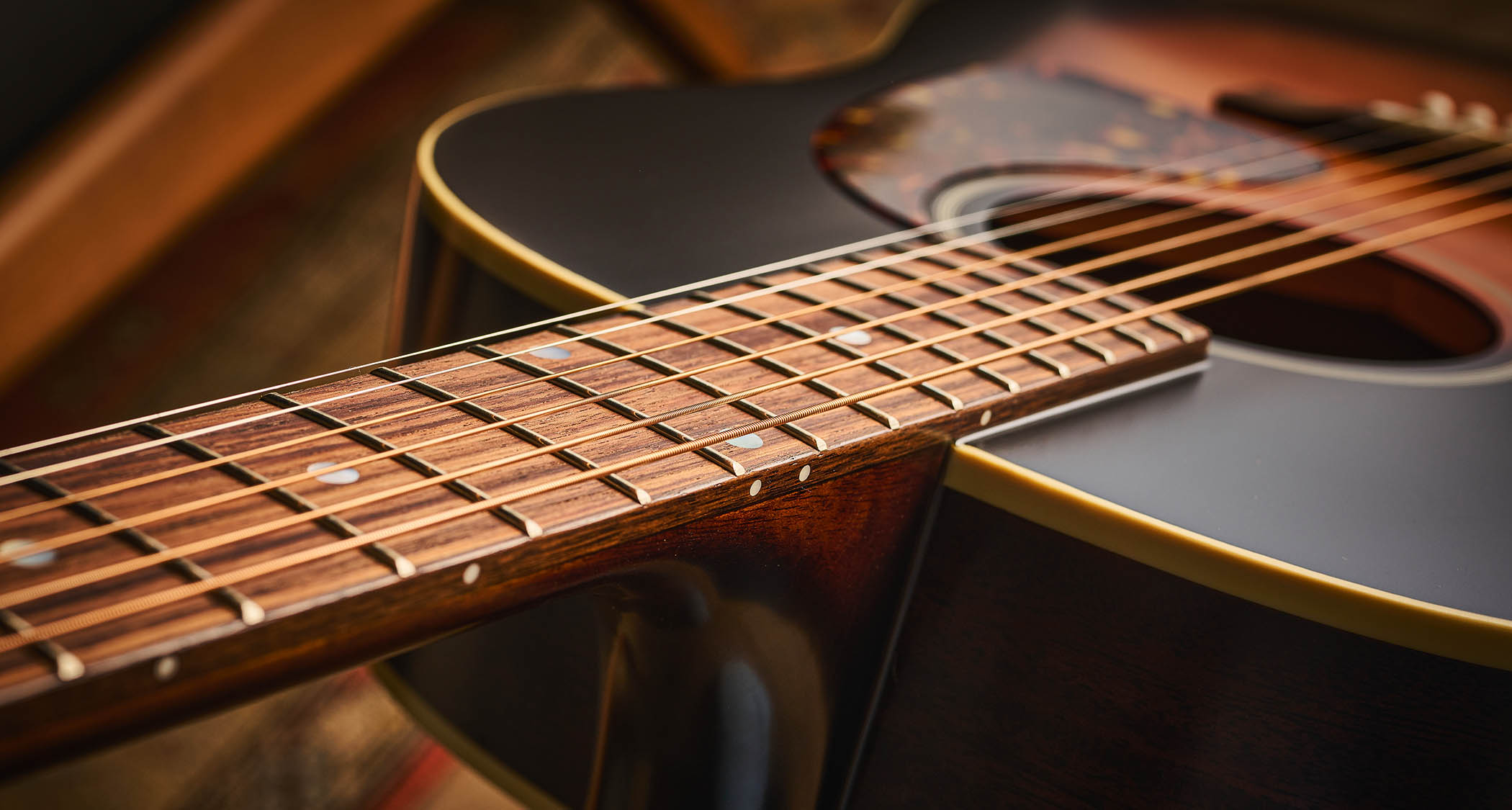
Despite describing how a guitar sounds in the flesh being desperately hard to put down on paper, we’d say that the sound of this ‘whispering giant’ comes across as being slightly compressed, as if you were in a top-class studio listening to playback after a sound engineer had worked some magic.
Not particularly ‘whispering’, either, as the sound is full and robust across the tonal spectrum; we’d describe it as polite and well behaved. It’s the sort of sound that would record well and sit in a mix like it belonged there all along. It responds well to fingerstyle, but it’s definitely chordal accompaniment where this jumbo shines the brightest. And the onboard LR Baggs delivers everything into the electronic realm without breaking a sweat.
As with the other two models here, the J-180 LS’s neck feels nice and substantial in the hand and is probably best described as a very full C profile and very user-friendly.
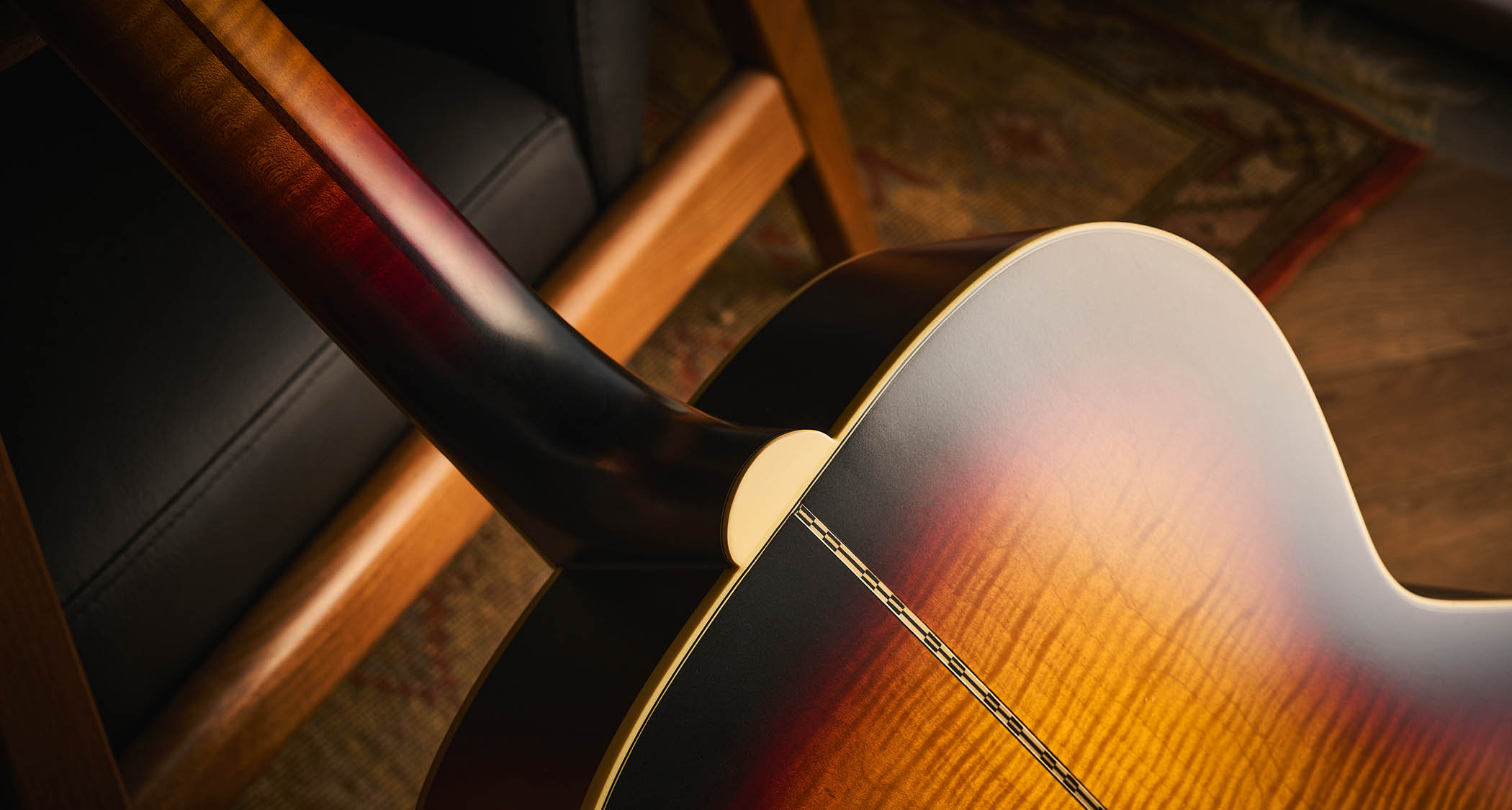
It’s possible to see why The Everlys requested that the J-200 be reduced a little in girth as the handling of the 180 seems a tad more manageable than its larger cousin. Gibson’s original design also managed to fulfil their request to keep that unmistakable ‘jumbo’ voice.
It’s nicely fat and rounded and, while it might miss a little oomph in the basses, everything here is nicely in proportion with great note separation and a very musical and toneful sound. Like the SJ-200, the output has a slight compression to it, although maybe less so. There’s bags of volume on tap if you want to strum hard, but it responds well to gentle fingerstyle, too.
If treading the boards at a live gig is in your sights, then the LR Baggs VTC will be your indomitable companion on stage as it provides everything you need to get your acoustic message across.
Verdict
Okay, we’re convinced. Epiphone has pulled off its conjuring trick once again and made three acoustic guitars that are amazing in practically every respect.
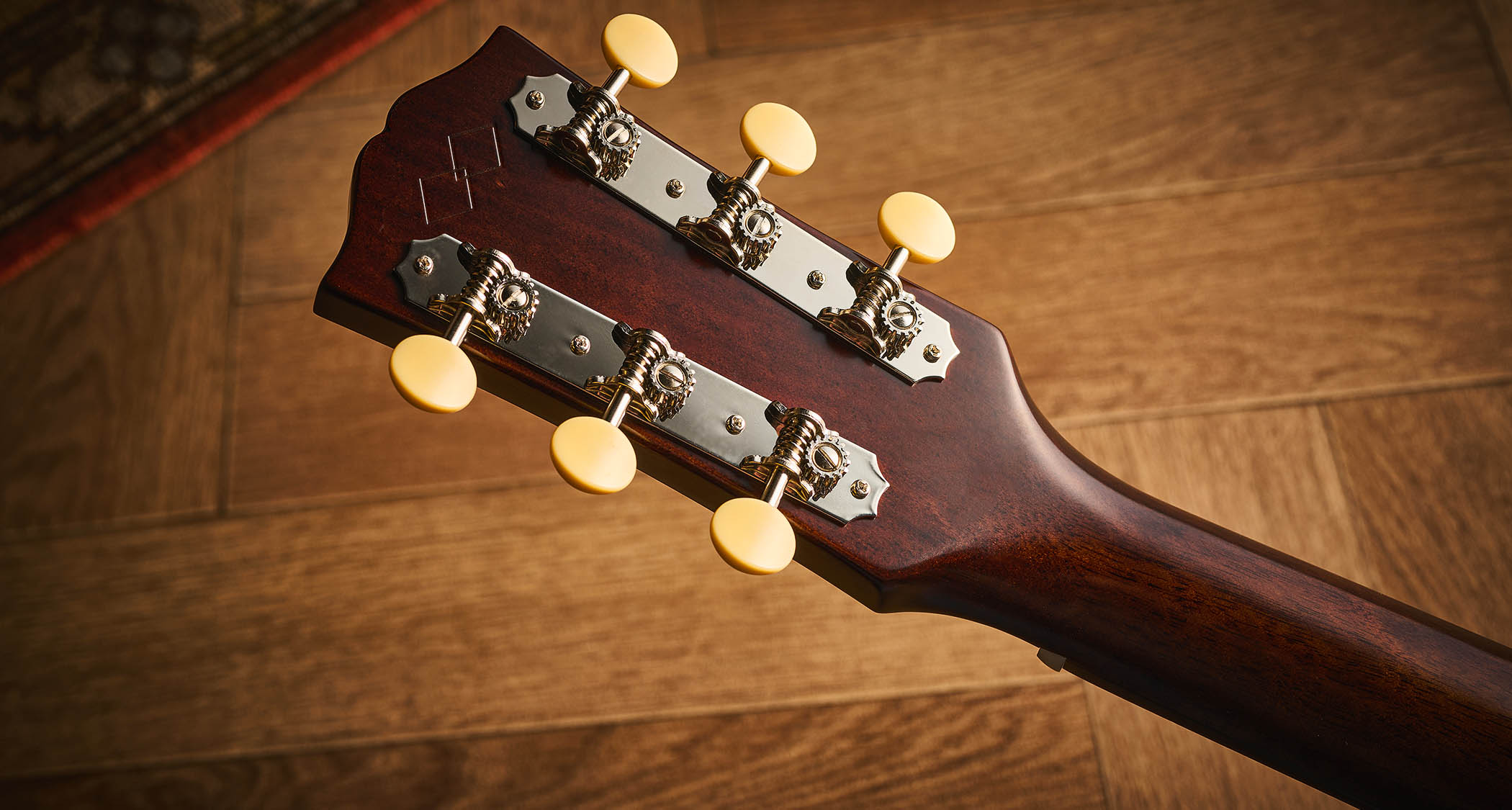
The J-45 won our hearts slightly more than its two stablemates because, well, it’s as much a legend in terms of dreadnoughts as its rival, Martin’s D-28. But the SJ-200 delivers on looks and tone, too.
The big beastie though it is, it may have the presence of a giant, but it also boasts such a finely finessed sound. The J-180 may deter a few would-be purchasers via those perhaps-too-distinctive star inlays, but, once again, it delivers everything it promises and more.
To sum up, this is obviously the beginning of a new age for the Epiphone brand. With these models, and the electrics we’ve seen so far, the company is shaking off its ‘copy’ image and occupying a position more like its historic status as a thriving partner to the Gibson brand. We seriously urge you to check these acoustics out – chances are you’ll be as impressed as we are.
Specs
Epiphone 1942 Banner J-45
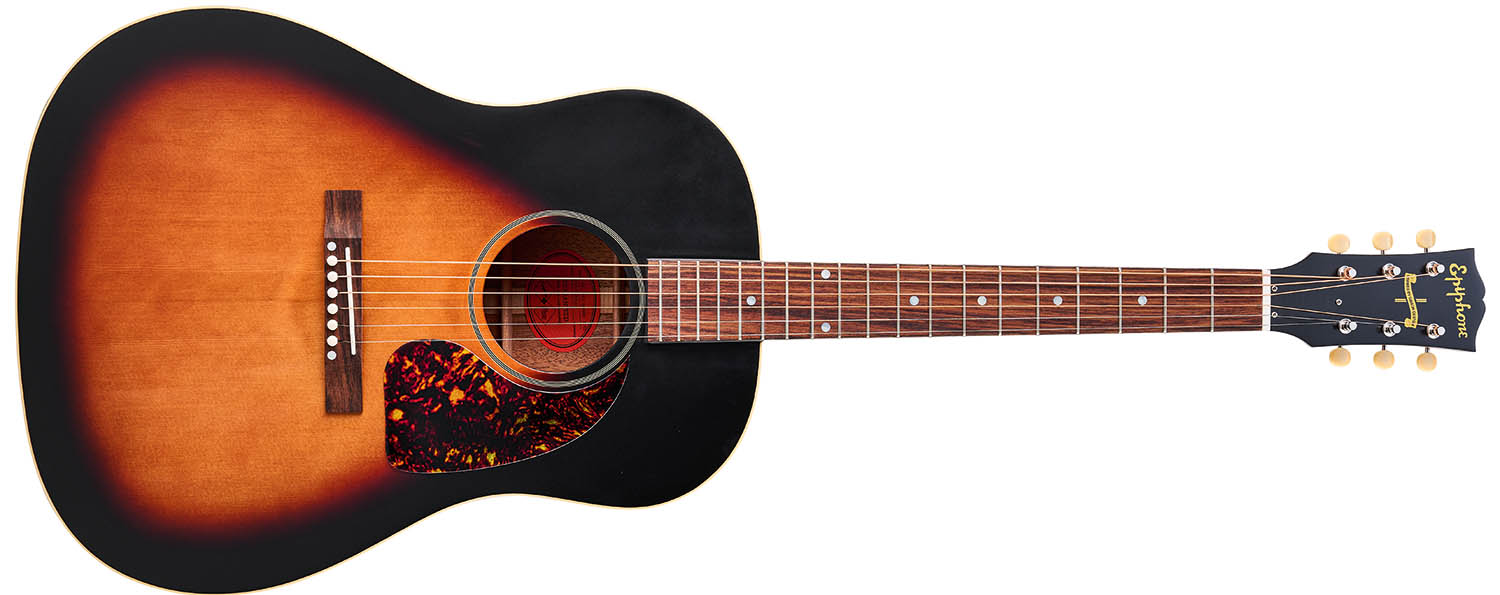
- PRICE: $1,299/£1,199 (inc case)
- ORIGIN: China
- TYPE: Dreadnought
- TOP: Thermally aged red spruce
- BACK/SIDES: Solid mahogany
- MAX RIM DEPTH: 121mm
- MAX BODY DEPTH: 404mm
- NECK: Mahogany
- SCALE LENGTH: 629mm (24.75”)
- TUNERS: 3-on-a-plate, open back
- NUT/WIDTH: Bone/44mm
- FINGERBOARD: Laurel
- FRETS: 19
- BRIDGE/SPACING: Laurel/ 55mm
- ELECTRICS: LR Baggs VTC
- WEIGHT (kg/lb): 1.63/3.6
- LEFT-HANDERS: No
- FINISH: Vintage Sunburst VOS (Vintage Original Sheen) polyurethane (as reviewed)
Epiphone 1957 SJ-200
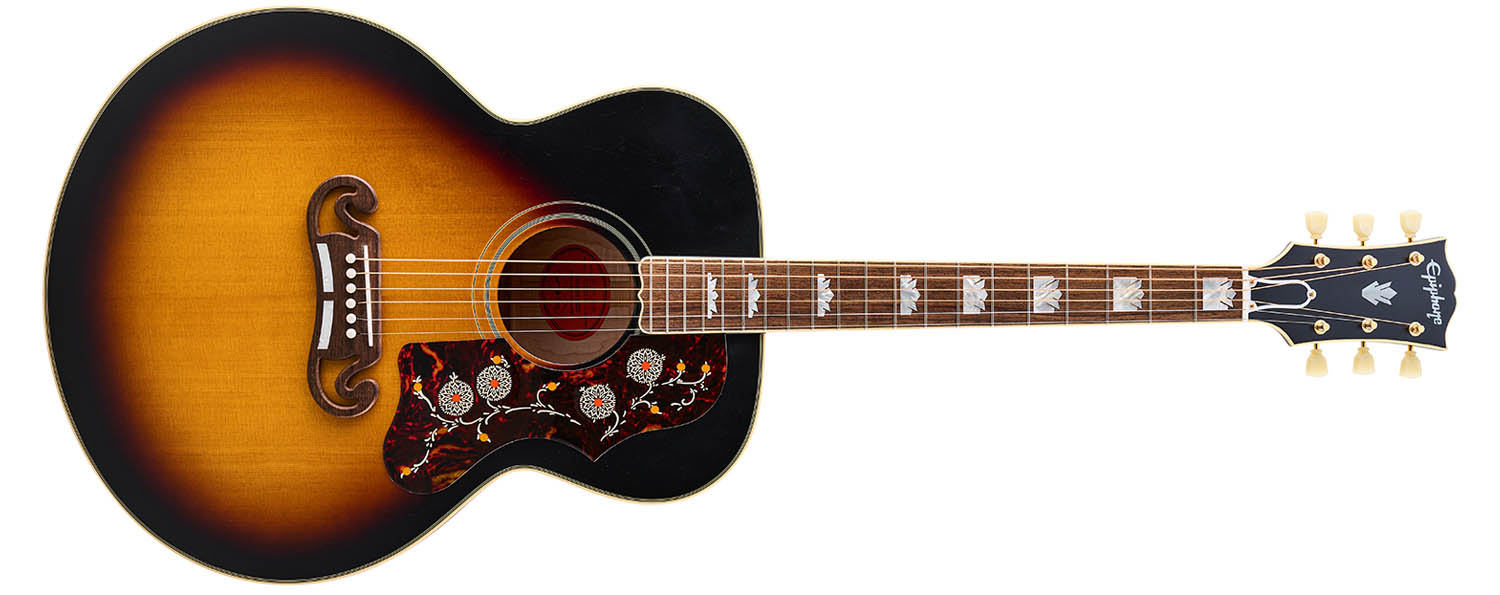
- PRICE: $1,499/£1,379 (inc case)
- ORIGIN: China
- TYPE: Jumbo
- TOP: Thermally aged Sitka spruce
- BACK/SIDES: Figured maple
- MAX RIM DEPTH: 120mm
- MAX BODY WIDTH: 427mm
- NECK: Flame maple/walnut
- SCALE LENGTH: 648mm (25.5”)
- TUNERS: Epiphone Deluxe
- NUT/WIDTH: Bone/44mm
- FINGERBOARD: Laurel
- FRETS: 20
- BRIDGE/SPACING: Laurel/ 55mm
- ELECTRICS: LR Baggs VTC
- WEIGHT (kg/lb): 2.4/5.4
- LEFT-HANDERS: No
- FINISH: Vintage Sunburst VOS polyurethane (as reviewed), Antique Natural
Epiphone J-180 LS
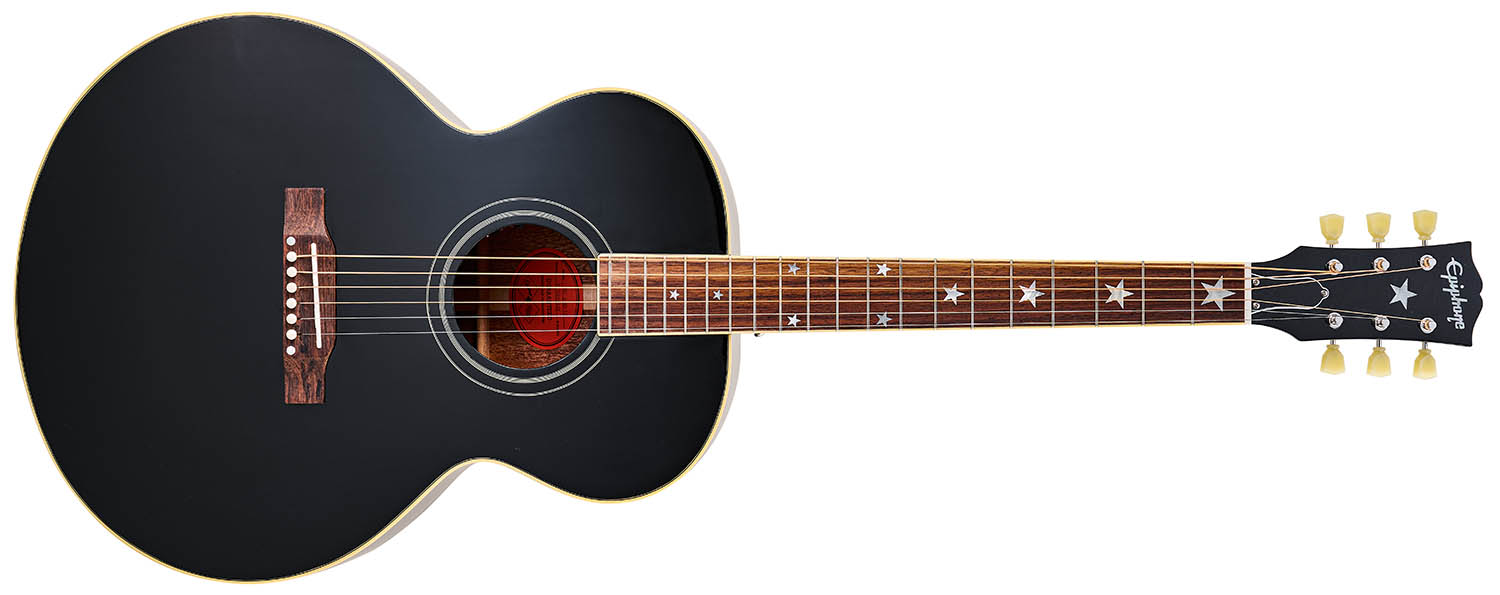
- PRICE: $1,299/£1,199 (inc case)
- ORIGIN: China
- TYPE: Jumbo
- TOP: Thermally aged solid spruce
- BACK/SIDES: Mahogany
- MAX RIM DEPTH: 123mm
- MAX BODY WIDTH: 404mm
- NECK: Mahogany
- SCALE LENGTH: 648mm (25.5”)
- TUNERS: Epiphone Deluxe/keystone buttons
- NUT/WIDTH: Bone/44mm
- FINGERBOARD: Laurel
- FRETS: 20
- BRIDGE/SPACING: Laurel/ 55mm
- ELECTRICS: LR Baggs VTC
- WEIGHT (kg/lb): 2.2/5
- LEFT-HANDERS: No
- FINISH: Gloss black Ebony poly (as reviewed), Pink, Frost Blue, Kerry Green and Lavender
- OPTIONS: Epiphone







